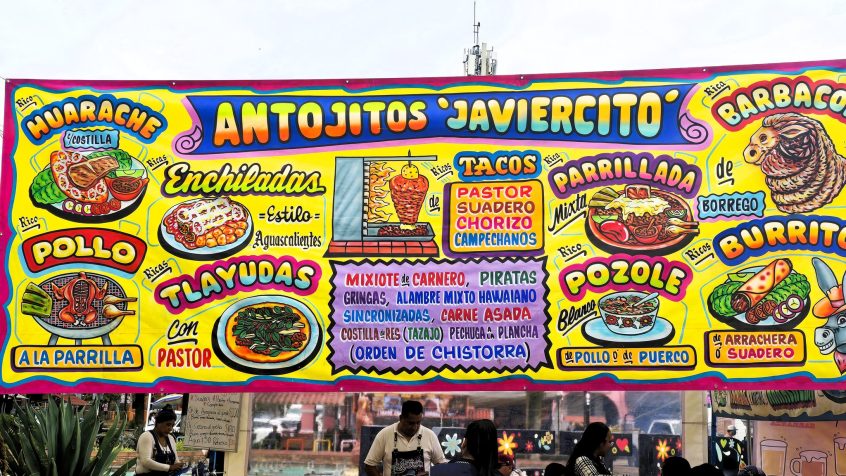Yesterday’s post was about the fabulous botanical garden in Toluca. Here’s where we went from there.
Leaving Toluca’s lush botanical garden behind, we drove a short distance to Metepec. It’s one of Mexico’s 177 Pueblos Mágicos, places honored for preserving a mix of history, culture, and tradition. The designation fits, Metepec has an energy that is both old and alive.
On Calle Miguel Hidalgo, the main shopping street, suns, moons, and flowerpots spilled onto the street. Fantastical árboles de la vida, Trees of Life, crowded shelves alongside bowls, mugs, and planters. Though much of it was beautiful, a lot looked alike. Last summer we visited Tecomatepec, a tiny village where almost every family makes pottery. That felt intimate and enchanting. Metepec, by contrast, leaned more commercial.
What got Sue and I excited wasn’t in a shop, but on the street. We spotted a corn seller, with a huge pot bubbling away on a little propane burner, ears of corn stacked inside. When we indicated to the proprietress that we wanted some, she fished one out with long tongs, shook it off, and in less than a minute had it transformed. First she pressed a stick into the cob as a handle to facilitate eating it. Then came a coat of mayonnaise, then a blizzard of crumbled cotija cheese. A shake of red chile powder gave it bite, and finally a squeeze of lime.
We bought two ears, one dollar each, and walked off as happy as can be. The corn was messy, spicy, tangy, and sweet all at once. Cheese clung to our fingers and dribbled down our shirts. Bits of corn stuck between our teeth, and we didn’t care a bit. It was the kind of simple street food that reminds me why I travel.
Rather than staying on the shopping street, we headed into the center of town. There, the Parroquia de San Juan Bautista, part of a 16th-century Franciscan convent, dominates a huge swathe of land.
Just outside the main square I asked our driver to stop so I could look more closely at the murals that adorned almost every building. There were also massive, ornate Trees of Life scattered around the town, as well as other clay sculptures.
By chance, we had arrived on August 15, the eve of the Fiesta de Nuestra Señora del Carmen. The town had turned into one enormous open-air restaurant.
Hand-painted signs shouted out menus of every Mexican food I’d heard of, plus many that were new to me. The air was thick with competing aromas: rich pork pozole, smoky lamb barbacoa, and grilled chicken sizzling on open flames. Pineapples roasted alongside chickens and piles of marinated meat, their juices dripping down onto the coals, sending up bursts of sweet smoke.
Tables filled the central plaza. We were there in the afternoon when things were still relatively quiet, but I can imagine that at night the plaza is jampacked.
Every so often, sharp cracks split the air. At first I thought they were gunshots or fireworks, but they were cohetes, skyrockets fired to announce prayers and keep spirits, good and bad, alert. We’d been hearing them all week in Ixtapan where we are staying. Their loud bursts wake me every morning.
We stopped at a vendor selling freshly made popcorn and bought two “small” bags for $1. Their idea of small would qualify as a large bucket in movie theaters in the U.S.
Walking back to the car, I spotted a footbridge near the central fountain. When I walked over it I noticed hundreds of engraved locks attached to it, testaments to unbreakable love.
Metepec charmed me with its mix of clay, color, and celebration.

